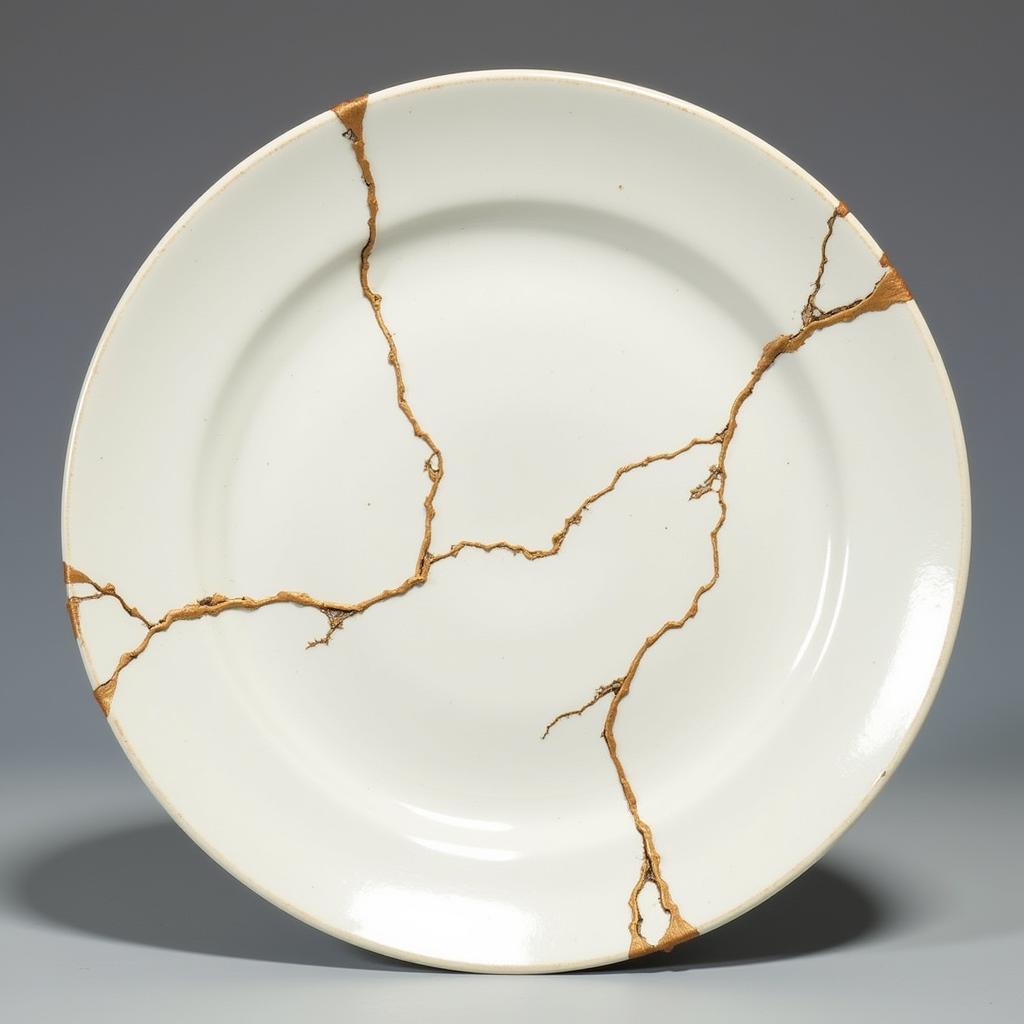The art of kintsugi, repairing broken pottery with gold, is experiencing a surge in popularity, and for good reason. It’s beautiful, symbolic, and adds a touch of elegance to any space. But when it comes to “Food Safe Kintsugi”, a common question arises: can you actually eat off a repaired kintsugi plate?
 Kintsugi plate repaired with gold
Kintsugi plate repaired with gold
Understanding Traditional Kintsugi and Food Safety
Traditional kintsugi involves using a mixture of lacquer (urushi) and powdered gold to mend broken ceramics. While visually appealing, this method isn’t inherently food safe. Urushi lacquer, in its natural state, can be toxic. It contains urushiol, an oil that can cause allergic reactions and skin irritation. Moreover, the porous nature of the lacquer can harbor bacteria, making it unsuitable for direct contact with food.
 The process of repairing a ceramic piece with kintsugi technique
The process of repairing a ceramic piece with kintsugi technique
Exploring Food Safe Kintsugi Alternatives
Don’t despair! If you’re drawn to the beauty of kintsugi but prioritize food safety, there are options available.
1. Modern, Food-Safe Resins:
Contemporary artists and artisans are increasingly turning to food-safe resins as a substitute for traditional urushi lacquer. These resins are non-toxic and designed to cure into a hard, impermeable surface that won’t leach chemicals into your food.
2. Decorative Kintsugi:
Another option is to embrace kintsugi as a purely decorative art form. You can still display your beautifully repaired kintsugi pieces, but use them for non-food purposes, such as holding jewelry, displaying candles, or simply as captivating art objects.
Tips for Ensuring Food Safety with Kintsugi
- Ask the Artist: When purchasing kintsugi pieces, inquire about the materials used. A reputable artist will be transparent about their process and whether the piece is food safe.
- Look for Certifications: Some artists who use food-safe resins might have certifications indicating that their materials meet safety standards.
- Use Your Best Judgement: If you’re unsure about the food safety of a kintsugi piece, it’s always best to err on the side of caution and avoid using it for eating or serving food.
Conclusion
Food safe kintsugi offers a way to enjoy the captivating beauty of this ancient art form while maintaining safety standards. By understanding the materials used and choosing reputable artists, you can confidently incorporate kintsugi into your home décor or even your tableware collection.
Remember, whether it’s the traditional gold-dusted repair or a modern, food-safe alternative, kintsugi serves as a powerful reminder that beauty can be found in imperfection and that broken things can be made whole, even more beautiful, and yes, sometimes, even food safe.